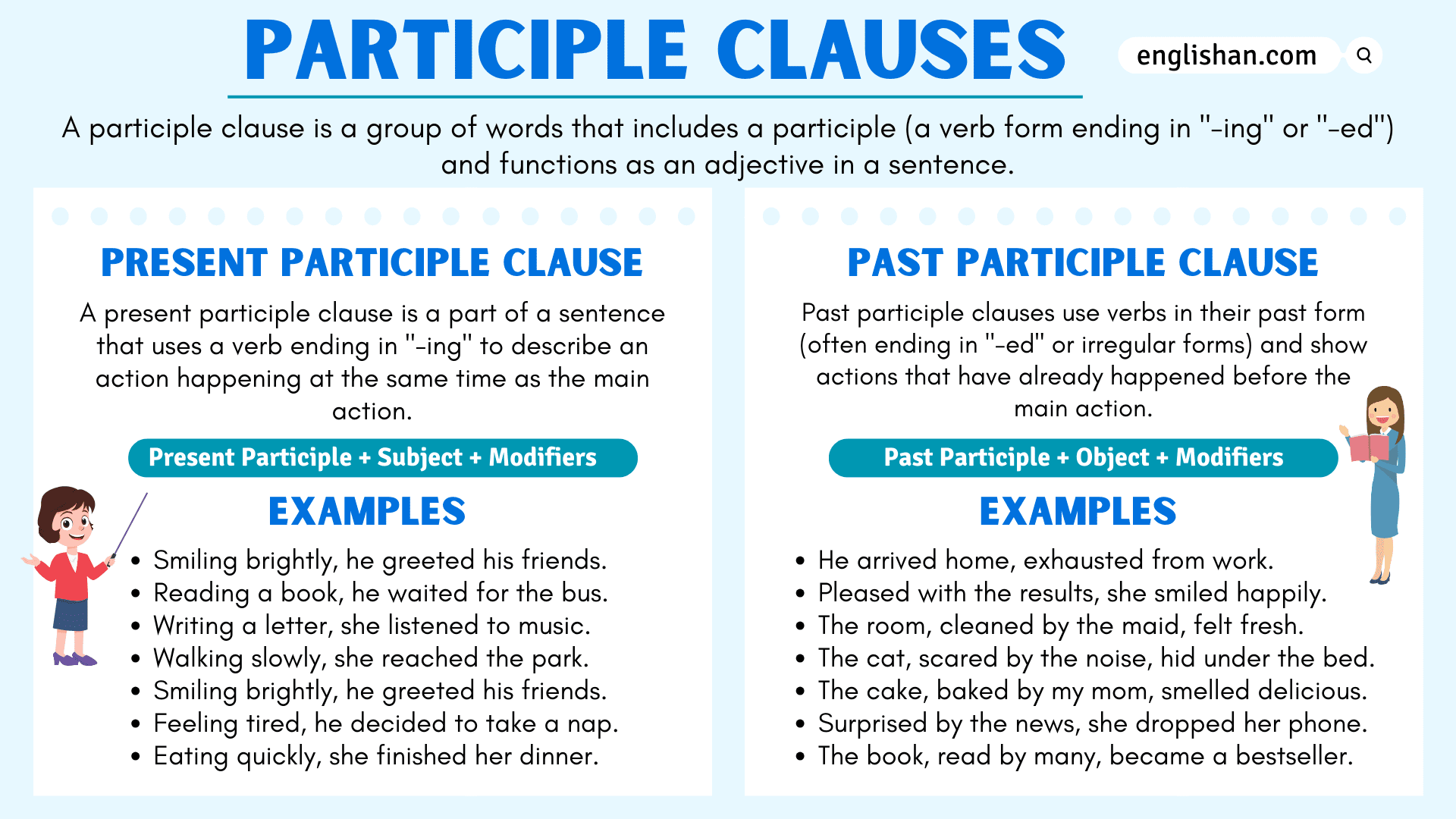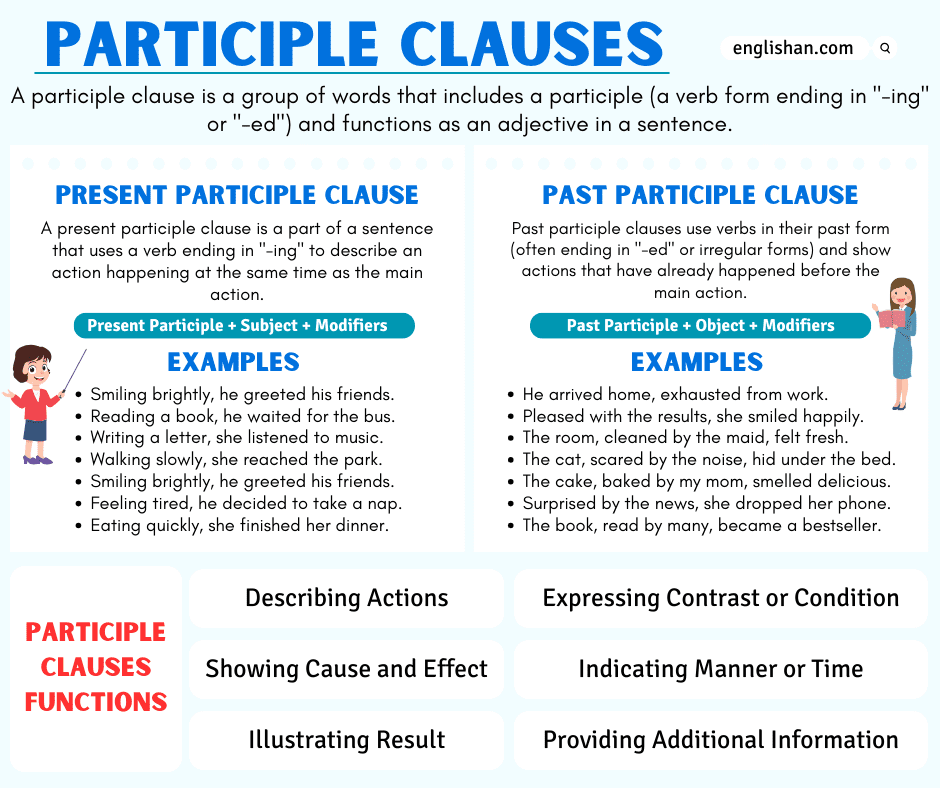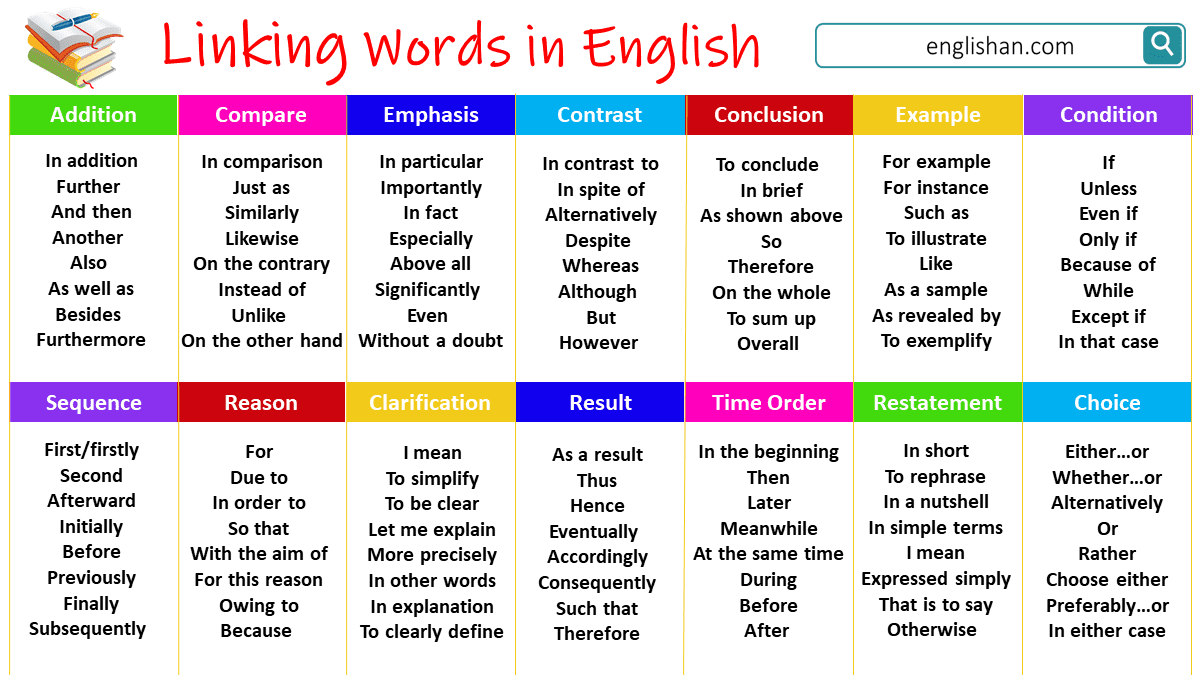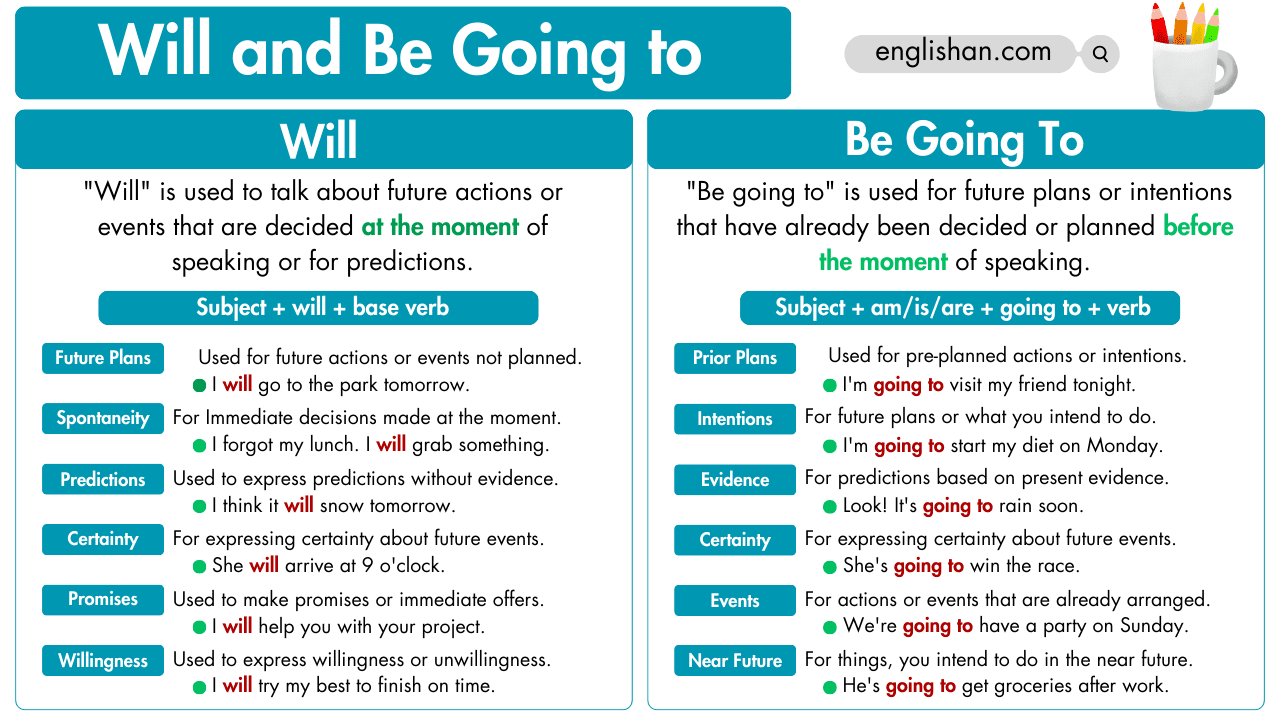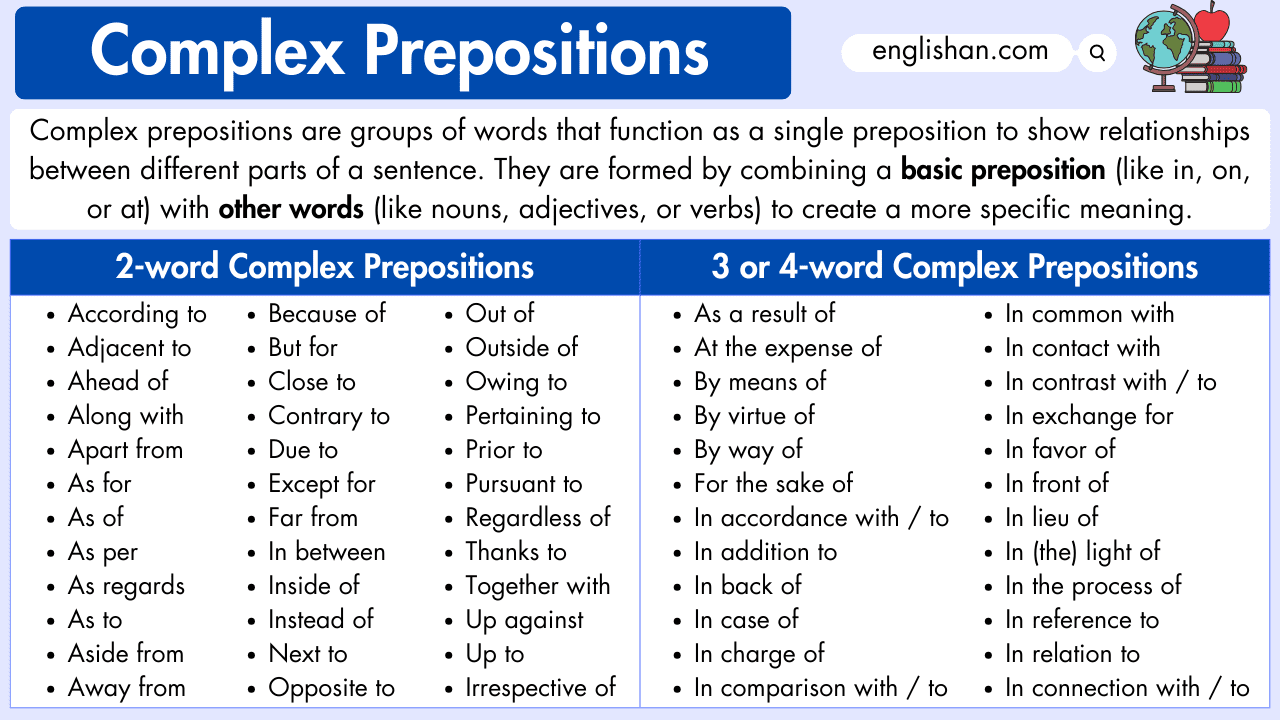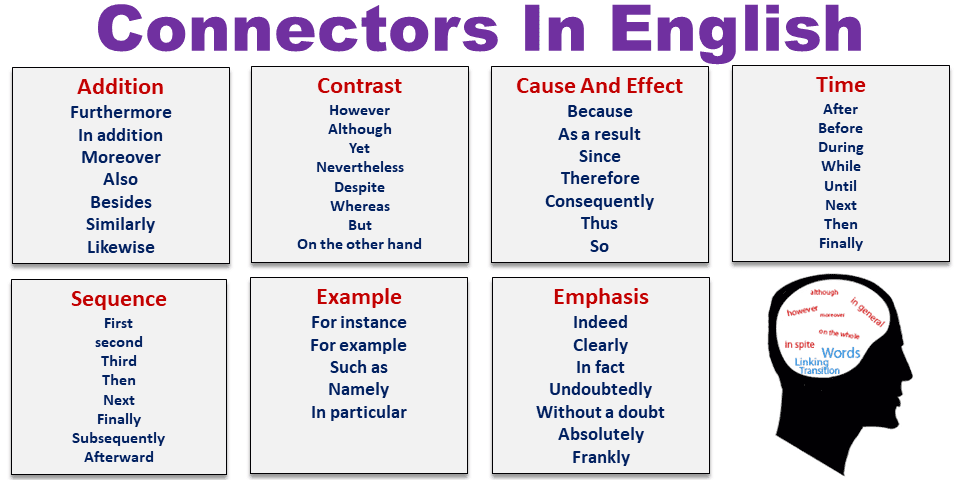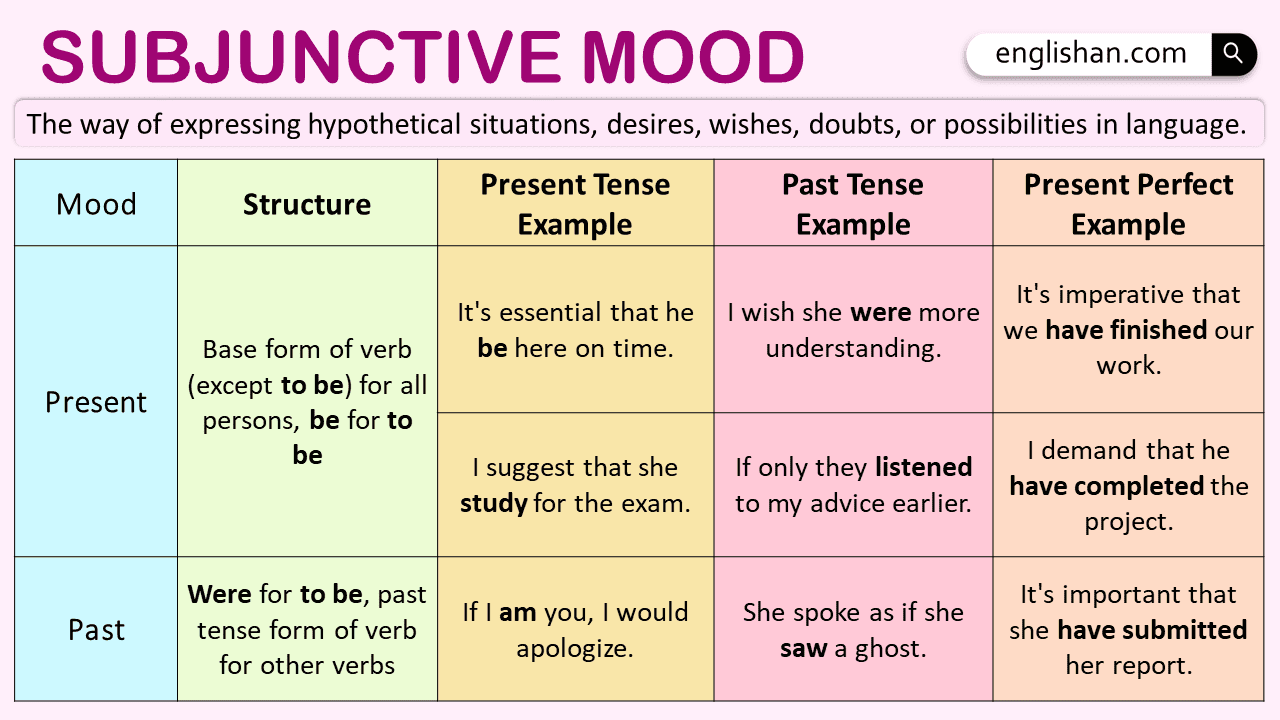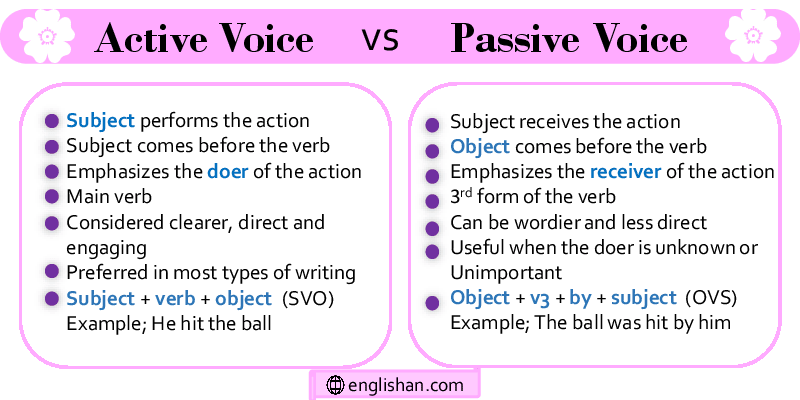Contents
Participle clauses are an essential aspect of English grammar that allow us to create more concise, descriptive, and sophisticated sentences. They can make your writing sound more fluent by reducing repetition and providing additional information efficiently. In this post, we’ll explore what they are, how to use them, and offer practical examples to help you understand their function in English sentences.
What Is a Clause?
A clause is a group of words that has a subject and a verb. It can express a complete thought (independent clause) or function as a part of a sentence (dependent clause). For example, “She ate pizza” is a clause because it has a subject “She” and a verb “ate” and makes sense on its own.
What Are Participle Clauses?
A participle clause is a type of subordinate clause that uses a participle (either present or past) to add information. They are often used to express conditions, reasons, results, or time relationships without the need for extra words. These clauses are commonly found in both written and spoken English, and they help reduce the number of words needed in a sentence while maintaining clarity and detail.
In professional grammar terms, these are non-finite clauses, which means they do not have a clear subject or verb tense by themselves and rely on the main clause for context.
For example:
Walking through the park, I saw a beautiful sunset.
Here, the clause “Walking through the park” provides additional information about when I saw the sunset.
Structure of Participle Clauses
Participle clauses typically consist of a participle (either present or past), a subject, and sometimes an object. They can come at the beginning, middle, or end of a sentence, depending on what you want to emphasize. Here is the basic structure:
Participle Clause = Participle + Subject (+ Object)
Example:
Main sentence: “She cooked dinner.”
Clause: “Using fresh ingredients.”
Combined sentence: “She cooked dinner using fresh ingredients.”
Types of Participle Clauses
There are three main types of participle clauses based on the form of the participle used: present participle, past participle, and perfect participle. Each type serves a different purpose in a sentence.
1. Present Participle Clauses
Present participle clauses are formed using the present participle (the -ing form of a verb). They are often used to describe an action happening at the same time as the action in the main clause.
Example:
Singing loudly, she walked down the street.
Here, “Singing loudly” describes what she was doing while walking.
Present participles can also show cause and effect:
Feeling tired, he went to bed early.
This explains why he went to bed.
2. Past Participle Clauses
Past participle clauses are formed using the past participle of a verb (usually ending in -ed, but irregular verbs have unique forms). These clauses typically have a passive meaning and show that something has been done to the subject of the main clause.
Example:
Tired by the long journey, she went straight to bed.
Here, “Tired by the long journey” shows a condition caused by the action.
Past participles are useful in expressing actions completed before the main action:
Driven by curiosity, he opened the mysterious door.
The participle here gives a reason or cause for his action.
3. Perfect Participle Clauses
Perfect participle clauses combine having with a past participle to show that one action was completed before another. These clauses are particularly useful for expressing sequences of events.
Example:
Having finished his homework, he went out to play.
Here, “Having finished his homework” explains what was done before he went out.
Perfect participles can also express cause and effect:
Having been warned about the danger, they proceeded cautiously.
This shows that the warning happened before they acted cautiously.
How to Use Participle Clauses
These clauses allow you to add information to a sentence more concisely. To form a participle clause, you simply use the appropriate participle (present, past, or perfect) at the beginning, middle, or end of the sentence, depending on what information you want to convey.
- At the Beginning of a Sentence: Adds background or cause before the main action.
- Seeing the opportunity, she quickly grabbed it.
- In the Middle of a Sentence: Interrupts the main sentence to provide additional information.
- The teacher, noticing the students were distracted, called for their attention.
- At the End of a Sentence: Provides extra details about the main clause.
- He sat on the bench, gazing at the stars.
Participle Clause vs Participle Phrase
A participle clause includes a participle (verb form) along with other words, forming a mini-sentence that adds more detail. For example: Walking slowly, he reached the bus stop.
Here, “walking slowly” is the participle clause, as it contains a verb form and gives more information about the subject.
On the other hand, a participle phrase is simpler. It only has the participle and its modifiers but doesn’t act like a full sentence. For example: Smiling happily, she waved at her friend.
“Smiling happily” is a participle phrase. It adds description but doesn’t include a full subject-verb relationship.
In short:
- Participle Clause = Verb + Other words (often subject-verb relationship).
- Participle Phrase = Verb + Modifiers (no complete subject-verb structure).
Common Mistakes to Avoid
While participle clauses are useful, there are some common mistakes that learners of English often make when using them. Here are a few to watch out for:
- Dangling Participle: This happens when the subject of the participle clause does not match the subject of the main clause.
- ❌ Walking through the park, the sunset was beautiful.
(This sentence implies the sunset was walking through the park, which makes no sense.) - ✅ Walking through the park, I saw a beautiful sunset.
- Misplacing the Clause: Make sure it is placed as close as possible to the subject it is describing.
- ❌ Shouting at his friend, the door suddenly opened.
- ✅ Shouting at his friend, he suddenly opened the door.
- Overusing Participle Clauses: While useful for conciseness, overusing them can make sentences harder to follow. Use them sparingly to keep your writing clear.
Examples
Below is a table showing different types and how they function in sentences:
| Participle Type | Participle Clause | Complete Sentence |
| Present Participle | Sitting by the window | Sitting by the window, she watched the rain. |
| Present Participle | Knowing the answer | Knowing the answer, he raised his hand confidently. |
| Past Participle | Exhausted from work | Exhausted from work, she fell asleep quickly. |
| Past Participle | Surprised by the news | Surprised by the news, they didn’t know how to respond. |
| Perfect Participle | Having been invited | Having been invited to the party, she decided to go. |
| Perfect Participle | Having lost his wallet | Having lost his wallet, he had to borrow money. |
FAQs:
A participle clause is a shorter way to add extra information using a participle (a verb form).
1. Present participle (ends in -ing): Shows actions happening at the same time.
Example: Running fast, she won the race.
2. Past participle (ends in -ed or special forms): Shows actions that happened before.
Example: Tired, he went to bed.
It makes sentences shorter and clearer.
A participle is a special form of a verb that can describe a noun or show action.
1. Present participle (ends in -ing):
Example: The barking dog woke me up.
(“Barking” describes the dog.)
2. Past participle (usually ends in -ed or has a special form):
Example: The lost book was found.
(“Lost” describes the book.)
Participles help describe things or show actions in a simpler way.
A perfect participle uses “having” + the past participle to show that something happened before another action.
Here are 8 examples:
1. Having eaten lunch, I felt better.
2. Having studied, she passed the test.
3. Having finished the book, I started a new one.
4. Having completed his work, he relaxed.
5. Having left early, we arrived on time.
6. Having read the letter, she cried.
7. Having decided to go, they packed.
8. Having broken the cup, she apologized.
Read More
